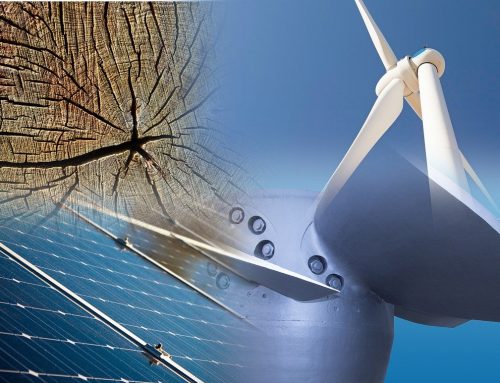August 2014
Updated version including preliminary remarks: To date, the energy turnaround in Germany has first and foremost been an “electric-power turnaround.” In the area of heating, the dynamics have been much weaker. In the fuels sector, we see chaos, setbacks and few successes. Last, not least there has been little progress in energy savings and overall energy demand reductions. Keeping these restrictions in mind the German Energiewende story includes both achievements and new types of challenges.
1. The Energy Turnaround has been a spectacular success in many respects: speed, citizen participation, technical progress, changing power relations.
The share of green electricity is currently surpassing 30%. There are 25,000 windmills and 1.4 million photovoltaic facilities in Germany. Some 50% of these facilities are in the hands of citizens and farmers. There are now almost 400,000 jobs in the renewables sector. The expected price reductions of photovoltaic and other renewable energy facilities have by and large been realized.
The primary legal framework for the transition of Germany’s power system is the so-called Renewable Energy Law (Erneuerbare Energien Gesetz – EEG). In effect since April 1st 2000, the EEG has shown that it is possible to restructure an entire sector of industry by suitable political means. The pro-renewables-option was taken up in the right way:
- feed-in tariffs (price regulation instead of quantity regulation);
- priority for renewables (green power has preferential access to the grid);
- long-term price guarantees (instead of short-term incentives);
- pushing different kinds and different size categories of renewables with a differentiated system of feed-in tariffs (against the market logic of expanding only the cheapest energy sources).
The EEG’s recipe for success was an intelligent combination of planning and the market. Investors did not have to worry about market access and prices. Both were guaranteed. What remained where management risks and technology-related risks, and the need to innovate.
The energy turnaround has shown that doing the right thing directly – in this case, via the EEG – is far and away better than pricing and trading the wrong thing (emissions), which has largely been ineffective and counterproductive.
2. The energy turnaround succeeded because of the permanent pressure of social movements influencing the legislature.
The environmental movement generally and the anti-nuclear-movement in particular were the foundation of Germany’s Energiewende. Dangerous and dirty energy sources were on the defensive and had to justify themselves. The turnaround was launched and defended in a tactically intelligent manner: a broad alliance in Parliament and a broad alliance in society.
These alliances were the backbone of the renewable energy law, which in turn created massive opportunities and – yes – simple financial advantages. A photovoltaic facility is often seen as a “savings account on the roof”. Similarly, a share of a wind mill is generating interest a little higher than that of the money market.
3. The Energiewende provides opportunities to radicalize the “energy question”.
Once it is clear that electricity is not necessarily a prerogative of big companies the question arises: Who decides? Who decides on the energy sources? Who decides on the grid? Who decides on the costs and the benefits? And the demand for a simple answer is growing: We, the people, decide!
In many cities and regions we witness an energy turnaround from below. Examples are: taking back grids in public hands, founding energy cooperatives, re-inventing utilities under public control, establishing concepts of regional energy autonomy based on renewables and energy saving, practicing all kinds of projects of sustainable life.
Once it is clear that renewables are in fact (and not only in theory) becoming the basis of power supply, it will be easier to advance democratic and public solutions for the entire electricity infrastructure. Once we are in that situation big corporate “solutions” are becoming alien to the decentralized reality with strong public elements.
4. The Energiewende has raised the question of political and economic power and is now endangered by legal changes in effect since August 1st, 2014.
Especially in summer times, the sun is our powerful partner. Hundreds of thousands of photovoltaic facilities are stealing the most profitable hours from the power corporations – at midday, when both demand and solar power reach their daily high. David-masses are defeating Goliath-monopolies.
But, of course, Goliath is fighting back. “Delay and take over” – that’s the guideline of power corporations, albeit not openly expressed. Putting on the brakes on photovoltaics and onshore wind power means longer running times for conventional power plants, more opportunities for offshore wind in corporate hands, and more time to resolve serious offshore problems.
The Trojan horse for establishing this corporate agenda was the cost issue. Of course, scandalizing costs is only possible as long as all the hidden costs of fossil and nuclear energy (and all the subsidies they receive) are not part of the talk. But that was achieved: after a long-lasting campaign the energy discussion centered on the price of green power and the uneven distribution of transition costs. Suddenly even corporate bosses discovered their feelings for the poor.
The government reacted. There are now expansion ceilings for all renewables. Feed-in tariffs will phase out. Starting in 2017, calls for bids and tenders will replace the existing system.
5. Reclaiming the dynamic of the Energiewende requires “Socializing the Environmentalists” and “Greening the Left and the Unions”.
In order to fight against the current setback and to reclaim new momentum, it will be vital to broaden the social basis of the energy transition. If we want ecological progress, we will have to provide “freedom from fear”. The protagonists of the energy turnaround are called upon to take the social issue seriously in its full force, and to contribute to defusing it. The entire distribution of transition costs and transition benefits (including the quality of green jobs) has to be a top priority of all ecologically concerned activists.
There also has to be awareness about new “green” distribution battles. Homeowners with above-average incomes are discovering privately energy autonomy. Self-produced and tax-free solar power is currently more than 50% cheaper than electricity taken from the grid. Thus, the “good” principle of energy autonomy is here in conflict with the “good” principle of social justice. This contradiction could easily be solved with pricing regulations and social tariffs. Since that requires (currently not foreseeable) amendments of national energy laws, collective and community-based projects become even more important.
What is needed are more activists who master the “magic pentagon”. The five-angle capabilities are: missionary ambition, communicative power, local acceptance, organizational talent and technical expertise. On the basis of stronger activism, the energy turnaround can potentially be the entry into a broad socio-ecological transformation. A multidimensional “return on initiative” is possible:
- Reduction of CO2 emissions
- Creation of added value locally, with new jobs in commerce and agriculture
- Substitution of imported fossil fuels by clean domestic energies
- Favorable energy prices for private households and local companies through local heating networks and drastically increased shares of cogeneration
- Strengthening local democracy, the municipal tax base and citizens’ involvement
- Direct meshing of citizens’ and local interests
- Stable regional economic circuits, based on needs-appropriate coordination of resources, procurement, production and use
- Profitable recycling of residual and waste materials instead of expensive disposal
- Increased independent activity on the part of municipalities, public utilities, the citizenry and local companies – minimal dependence on external investors
- Expansion of inter-municipal and inter-regional exchange
- Strengthening environmental consciousness and knowledge about energy issues
- Implementation of sustainable development models reducing energy demand.
Thus, a new type of community will appear on the horizon: democratized by means of citizens’ decision-making and citizens’ control, based on the principle of complete transparency, with the authority and capability to act economically as a self-confident community.
6. Despite vast differences between national energy systems, there are some lessons to be learned from the German experience.
- Establish legal frameworks that provide sufficient incentives for all sorts of new and independently acting renewable energy providers.
- Support innovation, diversification and decentralization with feed-in tariffs and reject quota systems as well as ceilings for renewables.
- Insist on clean energies’ preference in terms of global challenges and in terms of overall cost advantages.
- Keep in mind that energy transition is not only a technological, but also a deeply social issue. Distribute costs and benefits with fairness, with particular regard to low incomes.
- Create alliances that show in practice what energy democracy is all about: renewable energy under regional control, diversified ownership with strong elements of direct public responsibility, more local jobs and income through “import substitution”, energy self-determination reducing and, finally, ending the dependence on dirty fossil fuel cartels.
- Win against corporate interests with popular movements and tens of thousands of pioneers strongly influencing the legislature.
- Go beyond “capitalist greening” and focus on transitional speed – establishing as many decentralized renewable projects as possible within a short period of time.
- Open up space for a powerful transition from below considerably decreasing the market share of traditional corporations.
- Be aware that neither defeats nor victories are ever final.






